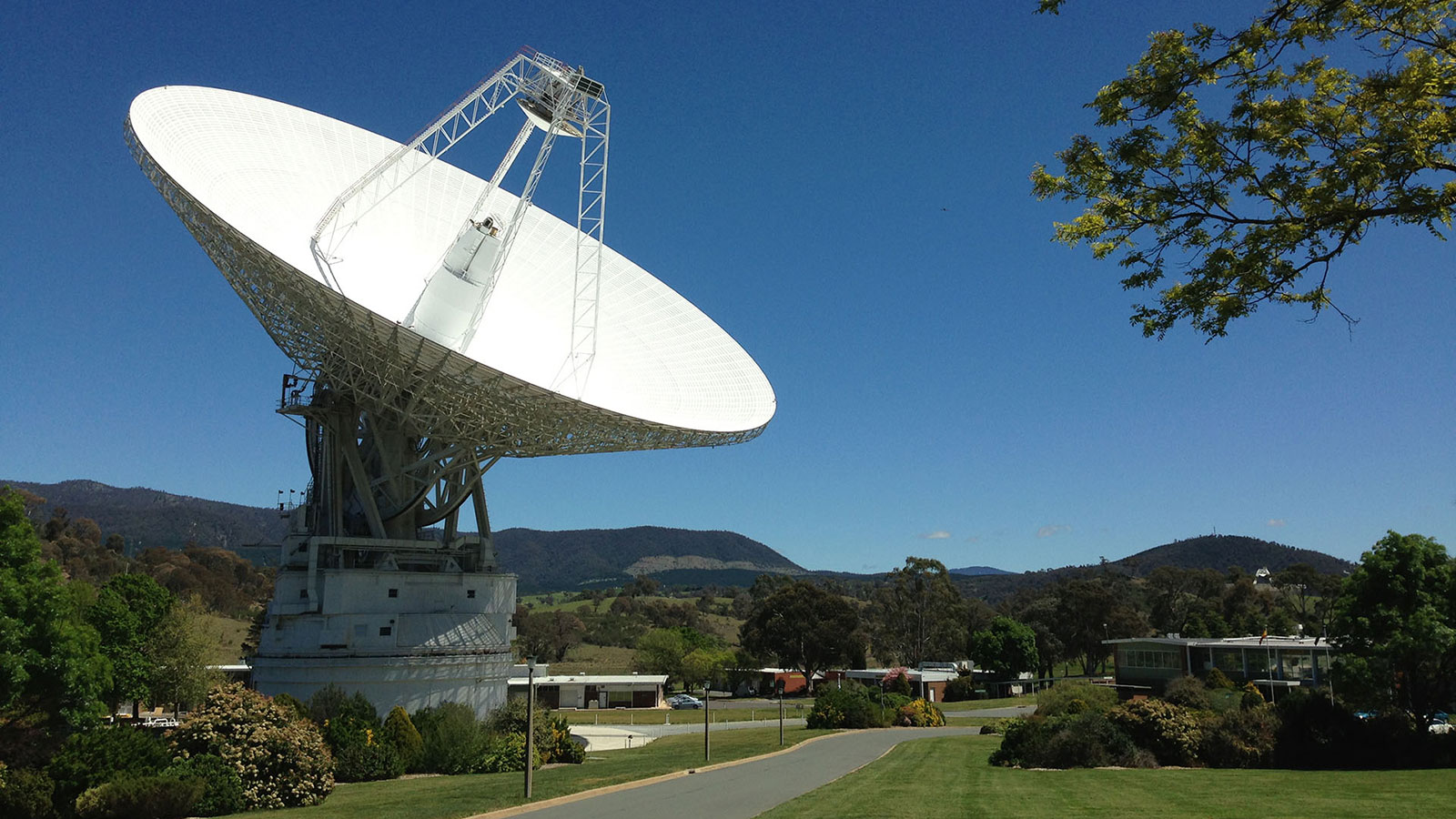What is the difference between science and pseudoscience?
From ancient aliens to UFO conspiracies, here's how to spot pseudoscience.

Ancient aliens. Astrology. Flat-Earth and UFO conspiracies. These are examples of pseudoscience, a system of beliefs that masquerades as true science but is far from it. To understand how pseudoscience works and why it's so popular, you need a guide to spotting it.
"Pseudoscience" has many possible definitions, and some people argue that the term shouldn't be applied at all. Perhaps the most useful definition of pseudoscience comes directly from the root words: The prefix "pseudo" is taken from the Greek word for "false," so pseudoscience is quite literally "false science."
But there is something about certain practices, like ghost hunting and astrology, that make them look like science even though they lack the underlying structures. Pseudoscience is a practice that, from the outside, looks like science, but upon closer inspection, is revealed to be nothing but. And what makes a practice look like science? To the outside world, science seems to be defined by its complex mathematics, incomprehensible jargon and dizzying array of gizmos and measurement devices.
Related: 25 space conspiracies debunked
Pseudoscience uses that same set of surface-like features; pseudoscientific practices employ their own kind of dense jargon, often feature an incredible amount of math, and even use strange and arcane measurement devices.
The soul of science
But the math, jargon and gizmos are only the "skin" of science — the surface features that are most apparent to the outside world. In other words, those are the tools that scientists use to do their jobs, the same way construction workers use hammers and saws, or lawyers use legal briefs and court motions.
Those tools don't define the job, however. Instead, underneath the surface, science has a much deeper set of practices and traditions that separate science from pseudoscience.
Get the Space.com Newsletter
Breaking space news, the latest updates on rocket launches, skywatching events and more!
While a dissection of what makes science special could encompass an entire book, a few key features of the scientific mindset make it stand out. For one, science is rigorous, which means scientists take their ideas seriously and seek to explore the full logical consequences of any hypothesis. Science is also humble, because any theory, even one that has stood for centuries, can be proved wrong at any moment.
Next, science is skeptical, allowing for the evidence to dictate beliefs — not the other way around. Science is also open, where methods and techniques must be shared and publicized to the wider community. Science is connected, meaning that every statement a scientist makes must be linked to the broader knowledge of the entire community. Lastly, science allows itself to evolve, with new evidence and ideas supplanting earlier beliefs.

Pseudoscience in the world
This distinction between the surface features of science and the deeper core of science allows us to draw a line between pseudoscience and proper science. Pseudoscientific practices keep the surface features (the jargon, math or gizmos) while rejecting the rigor, openness, skepticism and connectedness.
For example, proponents of ancient aliens aren't skeptical and disregard any evidence that runs contrary to their existing beliefs. By contrast, SETI researchers often encourage skepticism, caution and careful analysis of data before reaching any conclusions. Astrologers keep their methods secret. Flat-Earthers don't connect their ideas to the broader understanding of how things work.
If you encounter a belief system that seems like science at first glance but runs contrary to the underlying spirit of science, then it's probably pseudoscience. For example, if the statements of the belief system claim access to secret, inaccessible knowledge, then it's not open.
If it's static and unchanging, with evidence used to bolster the original belief and nothing else, then it's not evolving. If it's conspiratorial, claiming that the "establishment" is trying to suppress it, then it's not connected to the broader community of knowledge.
Once you gain enough practice, spotting pseudoscience is a snap. It looks like science on the outside but doesn't have the features that distinguish science as a powerful, vital way to examine the inner workings of the universe.
Join our Space Forums to keep talking space on the latest missions, night sky and more! And if you have a news tip, correction or comment, let us know at: community@space.com.

Paul M. Sutter is an astrophysicist at SUNY Stony Brook and the Flatiron Institute in New York City. Paul received his PhD in Physics from the University of Illinois at Urbana-Champaign in 2011, and spent three years at the Paris Institute of Astrophysics, followed by a research fellowship in Trieste, Italy, His research focuses on many diverse topics, from the emptiest regions of the universe to the earliest moments of the Big Bang to the hunt for the first stars. As an "Agent to the Stars," Paul has passionately engaged the public in science outreach for several years. He is the host of the popular "Ask a Spaceman!" podcast, author of "Your Place in the Universe" and "How to Die in Space" and he frequently appears on TV — including on The Weather Channel, for which he serves as Official Space Specialist.
-
Questioner Science about correlating evidence with explanation/theory using sound logic.Reply
Science uses consistent, honest methodologies to gather data/experience and then examines IF any logical explanation(s) will fit.
The method of science is either in the manner of the work or it is not, period. Everything else is irrelevant.
Beware of imagining publications, academic sheepskins, &/or 'information priesthoods' are any reliable substitute for that care & scrutiny.
Unexamined hearsay is anathema to science.
Scrutiny is its counter.
Adults have to do their own homework.
Real science doesn't PRESUME anything is required to have a rational explanation.
I will add rational numbers are a zero percent fraction of the real number line.
Real science doesn't PRESUME we will magically know what datasets will or will not apply to any particular focus of inquiry. Real science doesn't PRESUME the universe is a closed system, especially in light of the fact Godel already proved that's false. (as if quantum uncertainty didn't already suggest/support that as well.)
By enlarge people seduced by romantic, sanctimonious, inaccurate notions of what they imagine &/or wish science was/is/will-be do not have the hard headed, unforgiving logic as well as the social obliviousness to be reliable, honest examiners of what measures up to viable science product or not.
Science is not a religion replacement font of certainties, but at its best a provider of high probabilities.
In the end you're on your own,
good luck. -
Ryan F. Mercer Science is data driven, peer reviewed, and the results are repeatable. It uses control groups, experimental groups, blind, and double blind studies. It doesn't just provide evidence for why a theory is right, but also an explanation for why competing theories are wrong. It is not without bias, because there is no known system that is, but it does provide a reliably definitive methodology for discovering bias and eliminating it.Reply
Pseudoscience pretends to compete with science, but it never actually argues the facts. It side steps them, ignores them, and provides a distraction. It dresses up a lie to make the believer feel uniquely special. Who needs facts when you can feel uniquely special? -
Questioner Just accept that 'dark matter' is 'science', because self anointed 'professionals' espouse it to be so &Reply
just ignore the fact that it would have self contradicting properties in terms of gravity.
(as well as other tremendous problems)
oops!
defacing the edifice of 'science' with evidentiary facts, again. my bad. -
Classical Motion Nothing. Nothing at all. Man comes with ignorance, a complete lack of knowledge. Our only method for "knowledge" is comparative "knowledge". We have the arrogance to compare unknowns.....and then we rationalize this comparison. And we call this science. If you disagree with the consensus, it's pseudoscience.Reply
It's another word game our agenda society endures.
Of course our science is innocent of this, because they have experiments to prove their point. That's what they assure us of. But it's like lawyers. They never mention the previous exculpatory experiments......as a matter of fact, no exculpatory experiments are done any longer. The court only has a prosecutor......no defense or opposition is permitted.
The proof of any modern theory is NOT an agreeable, confirming experiment......the proof is not finding a disproving experiment. But it can't be found if not looked for. Who does a non-proving experiment?
As long as human nature remains human nature, we will always have pseudoscience. It's the only science we have. The only nature we have. -
Unclear Engineer While I basically agree with the distinction made in the article. I do have to say that there are a lot of pseudo-science-like behaviors by cosmology physicists. They too often state their beliefs as fact, or claim them to be so "mainstream" as to be beyond question.Reply
For instance, I see statements on both sides of "Does space expand everywhere?" with some claiming that even the space inside atoms and the nuclei of atoms is expanding, while others claim just as vehemently that it is not expanding in regions dominated by forces other than "dark energy". As far as science goes, both are only theory, with redshifted astronomical observations currently being caused by space expanding, according to the mainstream, although there is no way to determine whether it is expanding at the theorized rate even in this solar system, much less in an atom or atomic nucleus. But, there are insistent believers who will belittle anyone who does not accept their particular beliefs as surely true. But, clearly, they can't both be right - however, they may both be wrong - even if nobody yet understands how.
Real science distinguishes between repeatable measurements and inferences based on theoretical constructs.









